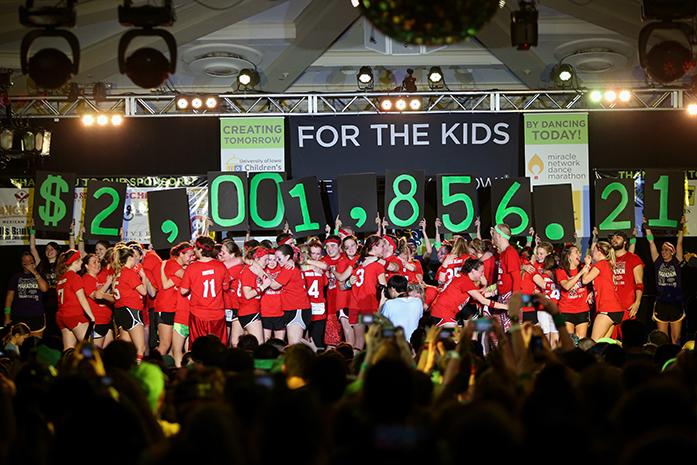After surpassing the goal of $2 million last year, Dance Marathon has its heart set on raising $2.4 million.
Its new goal is a 20 percent jump from last year, which has required the organization to implement new policies and utilize incentive programs to help reach their goal.
“We increased the minimum fundraising amount from $400 last year to $500 per dancer this year, which was a big thing we changed,” said Nidhi Patel, the public relations and marketing director for Dance Marathon.
Patel credits having fundraising events put on by Dance Marathon to encourage dancers to raise as much money as possible to help meet the $2.4 million goal.
“We provided students with fundraising parties, can drives, and had a $100 day in which all dancers were encouraged to raise $100 in one day,” she said.
$100 Day is a new program started this year, which brought in $135,395.50 in one day for the kids, said Dan Kolb, executive director of Dance Marathon.
Patel said dancers were encouraged to raise their $100 with incentives that varied from free shirts, call-a-thons, and a dancer jail, in which money had to be raised for participants to be released.
Having fun social-media graphics was another way that Dance Marathon helped encourage dancers to raise money during $100 Day, in hopes of reaching the overall goal of $2.4 million.
“We made fun graphics for social media, which helped with entertainment and so others could see you completed the $100 Day challenge,” Patel said.
Having incentives for dancers to raise money is a common theme among the organization. Dance Marathon offers a dancer incentive program, which rewards dancers with a particular prize based on how much money they raise over the $500 minimum.
Kolb noted a few incentives: $700 entitles dancers to a back massage at the event, $2,200 gets dancers a shirt donated and designed by Nike. And those who raise between $2,500 and $5,000 get to go to the hospital and visit children who aren’t able to attend the event at the IMU.
Even with all of the incentive programs and new policies, raising $2.4 million takes a village.
Jake Theil, executive head of Dance Marathon, recognizes this and worked to establish the Org Delegate Program, which encourages organizations on campus to get involved in Dance Marathon.
Thiel said greek life and the Society of Women Engineers participate the most.
“They come to our meetings and learn ways to promote Dance Marathon,” he said.
In return, Dance Marathon will help promote events or socials for that particular organization.
While dancers still have nine days to raise as much money as possible, Kolb seems confident that regardless if they meet their goal they will still be making a difference.



